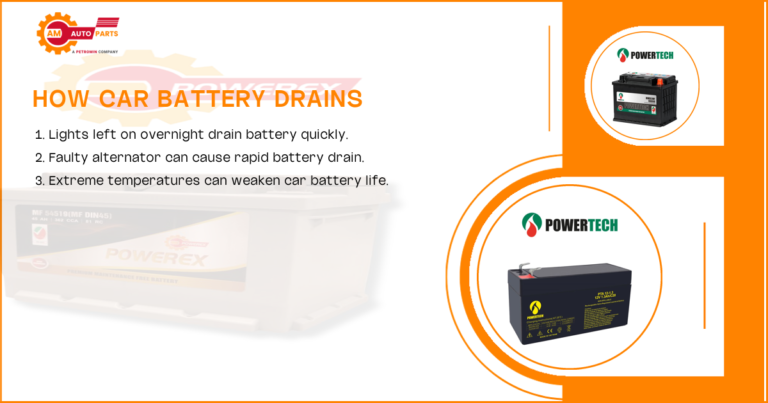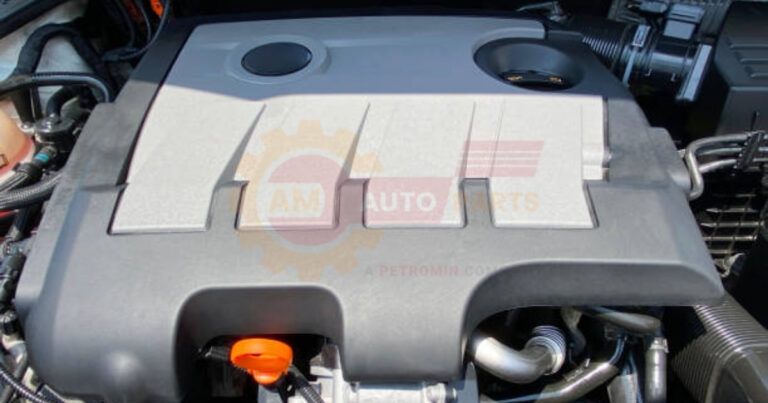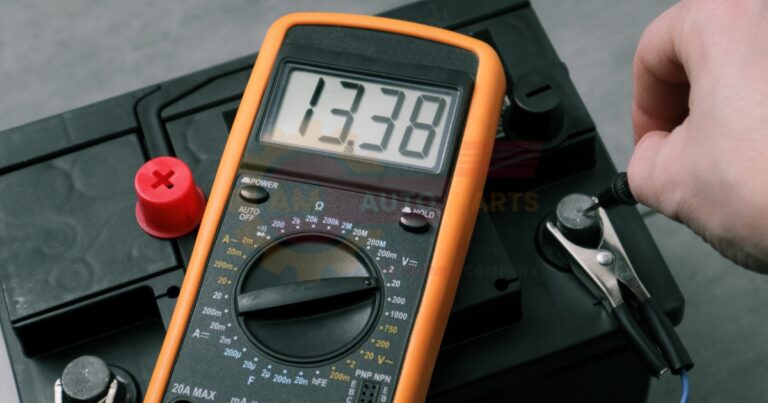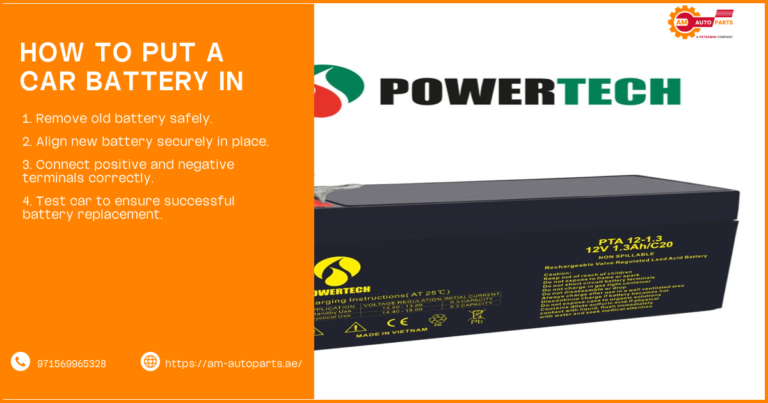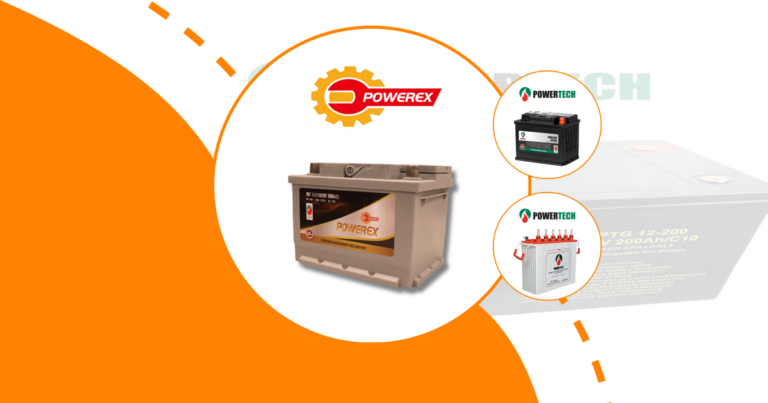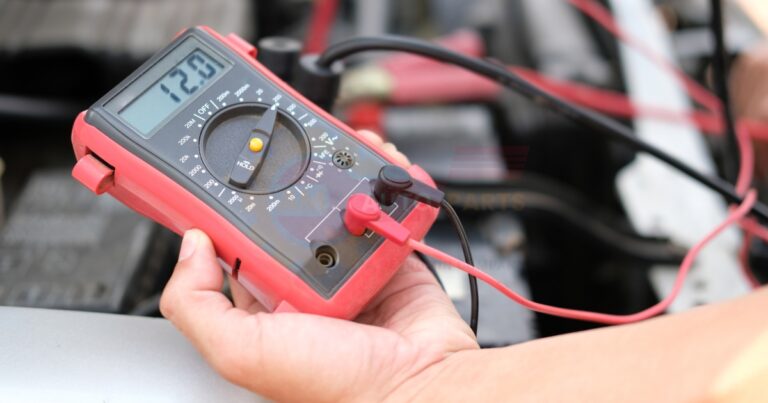The Rise of Solid-State Battery Technology
Solid-state batteries are emerging as a revolutionary technology in the world of energy storage. These advanced power sources are poised to transform various industries, particularly the automotive sector. Let’s delve into the key aspects of this innovative technology and its potential impact on the future of energy storage.
Advantages over traditional lithium-ion batteries
Solid-state batteries offer several significant advantages over their conventional lithium-ion counterparts. These benefits include higher energy density, improved safety, and longer lifespan. The unique composition of solid-state batteries allows for more efficient energy storage and faster charging times, making them an attractive option for various applications.
- Higher energy density
- Enhanced safety features
- Longer lifespan
- Faster charging capabilities
Key components and materials
The core components of solid-state batteries differ from traditional lithium-ion batteries in several ways. The most notable difference is the use of a solid electrolyte instead of a liquid one. This solid electrolyte can be made from various materials, including ceramics, polymers, or sulfides. The choice of electrolyte material plays a crucial role in determining the battery’s performance and characteristics.
- Solid electrolyte (ceramic, polymer, or sulfide-based)
- Lithium metal anode
- Cathode materials (similar to lithium-ion batteries)
- Current collectors and separators
Current challenges and limitations
Despite their promising potential, solid-state batteries face several challenges that need to be addressed before widespread adoption can occur. These obstacles include manufacturing difficulties, high production costs, and issues related to scaling up production to meet commercial demands.
- Manufacturing complexities
- High production costs
- Scaling up production
- Interface stability issues
Challenge | Description | Potential Solution |
Manufacturing | Complex production processes | Develop new manufacturing techniques |
Cost | High material and production expenses | Identify cost-effective materials and processes |
Scaling | Difficulty in mass production | Invest in research and development |
Interface stability | Issues with electrode-electrolyte interface | Improve material compatibility and design |
How Solid-State Batteries Work
Understanding the inner workings of solid-state batteries is crucial to appreciating their potential impact on various industries. Let’s explore the key components and mechanisms that make these batteries unique.
Electrolyte composition and function
The solid electrolyte is the heart of a solid-state battery. Unlike liquid electrolytes used in traditional lithium-ion batteries, solid electrolytes offer improved stability and safety. They allow for the efficient movement of lithium ions between the anode and cathode while preventing the formation of dendrites, which can cause short circuits and safety hazards.
- Ceramic electrolytes (e.g., LLZO, LATP)
- Polymer electrolytes
- Sulfide-based electrolytes
Electrode design and performance
Solid-state batteries often utilize a lithium metal anode, which offers higher energy density compared to graphite anodes used in conventional lithium-ion batteries. The cathode materials can be similar to those used in lithium-ion batteries, but their performance is enhanced due to the unique properties of the solid electrolyte.
- Lithium metal anode
- High-capacity cathode materials
- Improved electrode-electrolyte interface
Safety features and thermal management
One of the most significant advantages of solid-state batteries is their enhanced safety profile. The solid electrolyte eliminates the risk of electrolyte leakage and reduces the likelihood of thermal runaway, a dangerous phenomenon that can occur in lithium-ion batteries. This improved safety allows for more flexible battery designs and reduced need for complex thermal management systems.
- Reduced risk of thermal runaway
- Elimination of electrolyte leakage
- Simplified thermal management requirements
Safety Feature | Solid-State Battery | Traditional Lithium-Ion Battery |
Electrolyte | Solid, non-flammable | Liquid, flammable |
Thermal runaway risk | Very low | Higher |
Dendrite formation | Minimal | Possible |
Operating temperature range | Wider | Narrower |
Applications of Solid-State Batteries
Solid-state batteries have the potential to revolutionize various industries, offering improved performance and safety across a wide range of applications.
Electric vehicles and transportation
The automotive industry stands to benefit significantly from solid-state battery technology. These batteries promise longer driving ranges, faster charging times, and improved safety for electric vehicles. Major automakers, including AM Autoparts, are investing heavily in solid-state battery research and development to gain a competitive edge in the rapidly evolving EV market.
- Extended driving range
- Reduced charging times
- Enhanced safety features
- Potential for lighter vehicle designs
Consumer electronics and portable devices
Solid-state batteries could transform the consumer electronics landscape by enabling longer-lasting, faster-charging devices. From smartphones and laptops to wearable technology, these batteries have the potential to significantly improve the user experience and device functionality.
- Longer battery life for smartphones and laptops
- Faster charging for portable devices
- Improved safety for wearable technology
- Potential for thinner, more flexible device designs
Grid energy storage solutions
The renewable energy sector could benefit greatly from solid-state battery technology. These batteries offer the potential for more efficient and reliable grid energy storage solutions, helping to balance supply and demand in renewable energy systems and improve overall grid stability.
- Enhanced grid stability
- Improved energy storage efficiency
- Longer lifespan for grid storage systems
- Potential for more compact storage solutions
Application | Benefits of Solid-State Batteries |
Electric Vehicles | Longer range, faster charging, improved safety |
Consumer Electronics | Extended battery life, rapid charging, thinner designs |
Grid Energy Storage | Higher efficiency, longer lifespan, improved stability |
Battery Evolution Timeline
The journey of battery technology has been marked by significant milestones and innovations. Understanding this evolution provides valuable context for appreciating the potential impact of solid-state batteries.
From lead-acid to lithium-ion
The history of battery technology spans over two centuries, with each new development building upon previous innovations. The lead-acid battery, invented in 1859, was the first rechargeable battery and is still widely used today. Subsequent developments included nickel-cadmium (NiCd) and nickel-metal hydride (NiMH) batteries, leading up to the lithium-ion batteries that dominate the market today.
- 1859: Lead-acid battery invented
- 1899: Nickel-cadmium (NiCd) battery developed
- 1989: Nickel-metal hydride (NiMH) battery commercialized
- 1991: Lithium-ion battery introduced to the market
Emergence of solid-state technology
Solid-state battery technology has been in development for several decades, with significant progress made in recent years. The concept of solid-state batteries dates back to the 1970s, but it wasn’t until the 2010s that major breakthroughs in materials science and manufacturing techniques brought this technology closer to commercial viability.
- 1970s: Early research on solid-state electrolytes
- 2000s: Increased focus on solid-state battery development
- 2010s: Significant advancements in materials and manufacturing
- Present: Major investments and partnerships in solid-state technology
Future projections and innovations
The future of battery technology looks promising, with solid-state batteries at the forefront of innovation. Researchers and companies are exploring various approaches to overcome current challenges and bring solid-state batteries to market. Future innovations may include new electrolyte materials, advanced manufacturing techniques, and novel battery designs.
- Development of new solid electrolyte materials
- Advancements in electrode-electrolyte interface engineering
- Innovations in large-scale manufacturing processes
- Integration of artificial intelligence in battery design and optimization
Decade | Key Battery Technology |
1850s | Lead-acid |
1890s | Nickel-cadmium |
1980s | Nickel-metal hydride |
1990s | Lithium-ion |
2020s | Solid-state (emerging) |
Comparing Solid-State and Lithium-Ion Batteries
To fully appreciate the potential impact of solid-state batteries, it’s essential to compare them with the current industry standard: lithium-ion batteries.
Energy density and capacity
Solid-state batteries have the potential to offer significantly higher energy density compared to lithium-ion batteries. This increased energy density translates to longer-lasting devices and extended driving ranges for electric vehicles. The use of a lithium metal anode in solid-state batteries contributes to this improved energy storage capacity.
- Potential for 2-3 times higher energy density
- Increased capacity in the same physical size
- Possibility of lighter batteries with equivalent capacity
Charging speed and cycle life
One of the most exciting prospects of solid-state batteries is their potential for faster charging speeds. The solid electrolyte allows for more rapid ion movement, potentially reducing charging times significantly. Additionally, solid-state batteries are expected to have a longer cycle life, meaning they can undergo more charge-discharge cycles before degrading.
- Potential for charging times under 15 minutes
- Extended cycle life (potentially over 1000 cycles)
- Improved performance at extreme temperatures
Environmental impact and sustainability
Solid-state batteries offer several environmental advantages over traditional lithium-ion batteries. The absence of liquid electrolytes reduces the risk of hazardous material leakage, and the potential for longer lifespans means fewer batteries need to be produced and disposed of over time. However, the environmental impact of new materials used in solid-state batteries must also be considered.
- Reduced risk of hazardous material leakage
- Potential for longer battery lifespan
- Need for assessment of new material environmental impacts
- Possibility of more efficient recycling processes
Feature | Solid-State Battery | Lithium-Ion Battery |
Energy Density | Potentially 2-3x higher | Current standard |
Charging Speed | Potentially under 15 minutes | Typically 30 minutes to several hours |
Cycle Life | Potentially over 1000 cycles | 500-1000 cycles |
Safety | Higher due to solid electrolyte | Lower due to flammable liquid electrolyte |
Solid-State Battery Manufacturing Processes
The manufacturing of solid-state batteries presents unique challenges and opportunities compared to traditional lithium-ion battery production.
Materials synthesis and preparation
The production of solid-state batteries begins with the synthesis and preparation of key materials, particularly the solid electrolyte. This process requires precise control of chemical composition and material properties to ensure optimal battery performance. Researchers are exploring various methods to produce high-quality solid electrolytes at scale.
- Solid electrolyte synthesis techniques
- Cathode and anode material preparation
- Development of specialized coating processes
Cell assembly techniques
Assembling solid-state battery cells requires innovative approaches to ensure proper contact between the solid electrolyte and electrodes. This process is critical for achieving good ion conductivity and overall battery performance. Manufacturers are developing new techniques to overcome the challenges associated with solid-solid interfaces.
- Layer-by-layer assembly methods
- Hot pressing techniques
- Innovative electrode-electrolyte bonding processes
Quality control and testing procedures
Ensuring the quality and consistency of solid-state batteries is crucial for their commercial success. Manufacturers are developing new testing procedures and quality control measures specific to solid-state technology. These processes aim to identify and address potential issues related to material purity, interface stability, and overall battery performance.
- Non-destructive testing methods
- Advanced electrochemical characterization techniques
- Accelerated aging and performance testing
Manufacturing Stage | Key Considerations |
Material Synthesis | Purity, consistency, scalability |
Cell Assembly | Interface stability, layer adhesion |
Quality Control | Performance testing, safety verification |
Market Outlook for Solid-State Batteries
The solid-state battery market is poised for significant growth in the coming years, driven by increasing demand for high-performance energy storage solutions.
Industry partnerships and collaborations
Major players in the automotive and electronics industries are forming strategic partnerships to accelerate the development and commercialization of solid-state batteries. These collaborations often involve automakers, battery manufacturers, and research institutions working together to overcome technical challenges and bring solid-state technology to market.
- Partnerships between automakers and battery companies
- Collaborations with academic research institutions
- Joint ventures for manufacturing and production
Investment trends and funding
The solid-state battery sector is attracting significant investment from both private and public sources. Venture capital firms, government agencies, and large corporations are pouring billions of dollars into research and development efforts. This influx of funding is helping to accelerate progress and bring solid-state batteries closer to commercial viability.
- Venture capital investments in startups
- Government funding for research and development
- Corporate investments in solid-state technology
Projected market growth and adoption rates
Analysts predict substantial growth in the solid-state battery market over the next decade. While initial adoption may be slow due to high costs and manufacturing challenges, the market is expected to accelerate rapidly as technology improves and production scales up. Electric vehicles are likely to be the primary driver of this growth, followed by consumer electronics and grid storage applications.
- Projected market size of over billion by 2030
- Initial adoption in high-end electric vehicles
- Gradual expansion into consumer electronics and grid storage
Year | Projected Market Size |
2025 | billion |
2030 | + billion |
2035 | 5+ billion |
Overcoming Challenges in Solid-State Battery Development
Despite their promising potential, solid-state batteries face several challenges that must be addressed before widespread commercialization can occur.
Addressing interface stability issues
One of the primary challenges in solid-state battery development is ensuring stable interfaces between the solid electrolyte and electrodes. Poor interface stability can lead to increased resistance and reduced battery performance over time. Researchers are exploring various approaches to improve these interfaces, including novel material combinations and surface treatments.
- Development of compatible electrode and electrolyte materials
- Surface modification techniques to enhance interface stability
- Exploration of new manufacturing processes to improve contact
Scaling up production capabilities
Transitioning from laboratory-scale production to large-scale manufacturing is a significant hurdle for solid-state battery technology. Current production methods are often complex and time-consuming, making it difficult to achieve the high volumes needed for commercial applications. Manufacturers are investing in new production techniques and equipment to overcome these challenges.
- Development of automated production lines
- Exploration of new manufacturing techniques (e.g., 3D printing)
- Optimization of material synthesis processes for large-scale production
Reducing manufacturing costs
The high cost of solid-state batteries is a major barrier to widespread adoption. Current production costs are significantly higher than those of traditional lithium-ion batteries, primarily due to expensive materials and complex manufacturing processes. Reducing these costs is crucial for making solid-state batteries competitive in the market. Truck battery longevity depends on proper maintenance and regular use RV battery protection helps keep your RV batteries safe from damage It prevents overcharging and makes sure your batteries last longer
Vehicle power optimization helps cars use less fuel and go farther It makes engines work better so vehicles can be more efficient
- Identification of lower-cost alternative materials
- Optimization of production processes to reduce waste and improve efficiency
- Economies of scale as production volumes increase
Challenge | Potential Solutions |
Interface Stability | Material engineering, surface treatments |
Production Scaling | Automated manufacturing, new production techniques |
Cost Reduction | Alternative materials, process optimization |
The Role of Solid-State Batteries in Sustainable Energy
Solid-state batteries have the potential to play a significant role in the transition to more sustainable energy systems.
Reducing carbon footprint in transportation
The adoption of solid-state batteries in electric vehicles could significantly reduce the carbon footprint of the transportation sector. By enabling longer driving ranges and faster charging times, solid-state batteries could accelerate the shift away from fossil fuel-powered vehicles, leading to substantial reductions in greenhouse gas emissions.
- Increased adoption of electric vehicles
- Reduced reliance on fossil fuels for transportation
- Potential for lighter vehicles, improving overall efficiency
FAQ’s
What are the main benefits of solid-state batteries?
The main benefits of solid-state batteries include higher energy density, improved safety, and longer lifespan compared to traditional lithium-ion batteries. These advantages stem from the use of a solid electrolyte, which allows for more efficient energy storage and eliminates the risk of electrolyte leakage. Additionally, solid-state batteries have the potential for faster charging times and better performance in extreme temperatures.
How do solid-state batteries improve electric vehicle performance?
Solid-state batteries can significantly improve electric vehicle performance by offering higher energy density, which translates to longer driving ranges. They also have the potential for faster charging times, reducing the time needed for recharging during long trips. The improved safety profile of solid-state batteries could allow for more flexible vehicle designs and potentially reduce the weight of battery packs, further enhancing overall vehicle efficiency and performance.
When will solid-state batteries be commercially available?
While exact timelines vary, many experts predict that solid-state batteries will begin to enter the commercial market in the mid-2020s. Initial applications are likely to be in high-end electric vehicles and specialized electronics. However, widespread adoption across various industries may take until the late 2020s or early 2030s as manufacturing processes are refined and production scales up to meet demand.

